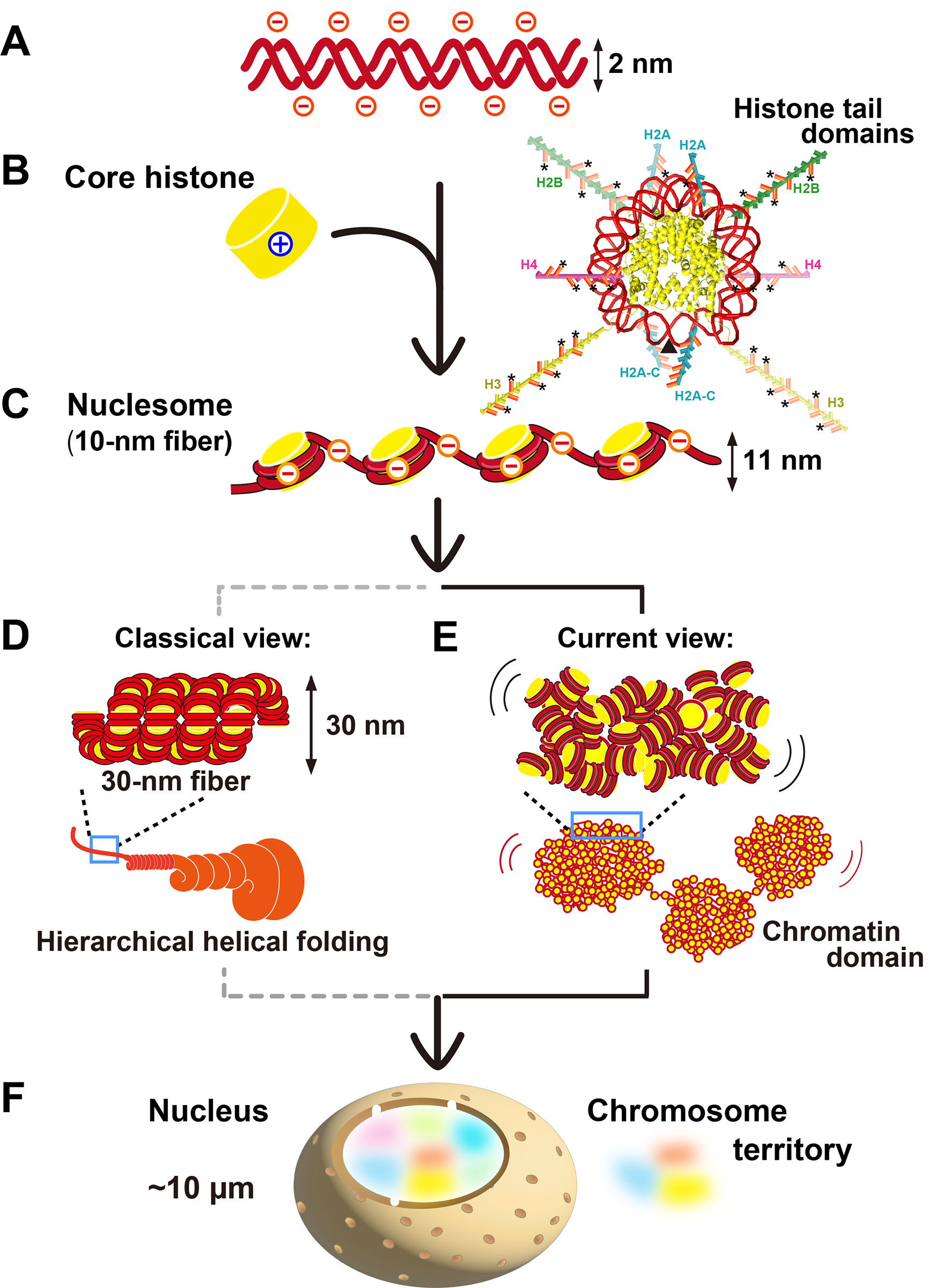2025-04-25 国立遺伝学研究所

図:DNA、ヒストン、ヌクレオソーム、クロマチン
図はIde et al. (BioEssays 2022)より改変して使用。
<関連情報>
- https://www.nig.ac.jp/nig/ja/2025/04/research-highlights_ja/rh20250425.html
- https://www.jstage.jst.go.jp/article/pjab/advpub/0/advpub_pjab.101.020/_article
クロマチン構造のパラダイムの転換:30nmのクロマチン線維から液体のような組織へ The shifting paradigm of chromatin structure: from the 30-nm chromatin fiber to liquid-like organization
Kazuhiro MAESHIMA
Proceedings of the Japan Academy, Series B Published:April 25, 2025
DOI:https://doi.org/10.2183/pjab.101.020
Abstract
The organization and dynamics of chromatin are critical for genome functions such as transcription and DNA replication/repair. Historically, chromatin was assumed to fold into the 30-nm fiber and progressively arrange into larger helical structures, as described in the textbook model. However, over the past 15 years, extensive evidence including our studies has dramatically transformed the view of chromatin from a static, regular structure to one that is more variable and dynamic. In higher eukaryotic cells, chromatin forms condensed yet liquid-like domains, which appear to be the basic unit of chromatin structure, replacing the 30-nm fiber. These domains maintain proper accessibility, ensuring the regulation of DNA reaction processes. During mitosis, these domains assemble to form more gel-like mitotic chromosomes, which are further constrained by condensins and other factors. Based on the available evidence, I discuss the physical properties of chromatin in live cells, emphasizing its viscoelastic nature—balancing local fluidity with global stability to support genome functions.


